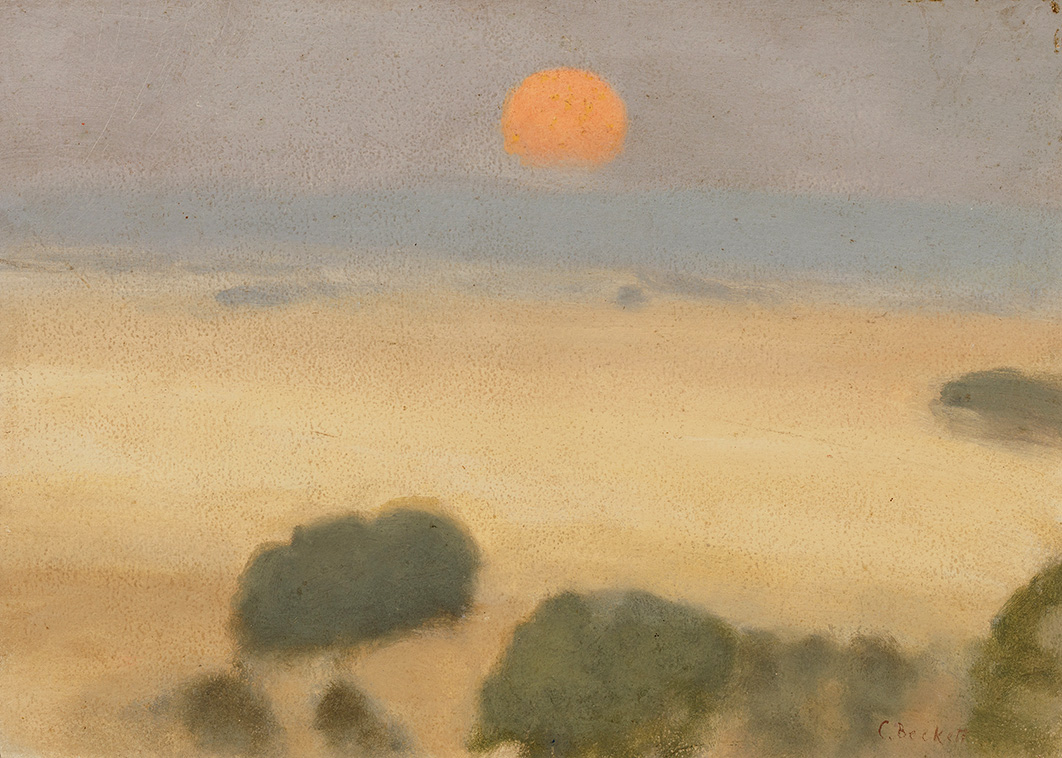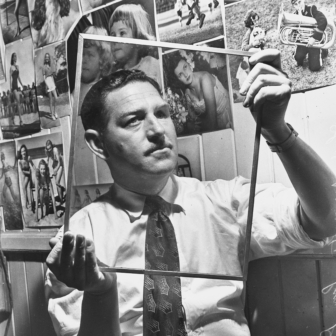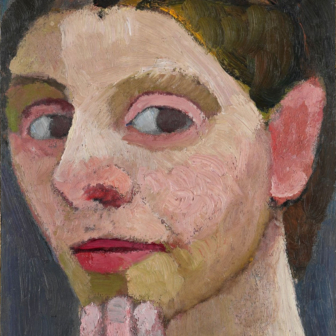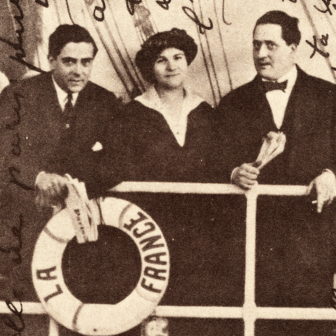When Clarice Beckett died in 1935, having caught pneumonia while painting outdoors during a rainstorm, the conventional wisdom was that hers had been a wasted talent. The art establishment admired her occasional paintings of cut flowers but deplored the many landscapes that revelled in poor light to create what one critic called “acres of grey mists and slurred edges” and “a long swell of uncertainty.”
Beckett took up painting seriously only in her mid twenties, and died at forty-eight. She painted mostly the streets and beaches of her suburb, Melbourne’s Beaumaris, and never travelled outside Victoria. She had her supporters, certainly, even among the art critics; but after she died, she was largely forgotten. If not for the persistence of one young woman a generation later, she could have disappeared from memory altogether.
A blockbuster exhibition of 150 works by this unique artist, Clarice Beckett: The Present Moment, now in its final month at the Art Gallery of South Australia, shows what a loss that would have been. (For those who can’t get to Adelaide before the exhibition closes, Marcus Bunyan provides a very good guide on his website, Art Blart.)
Fifty years after Rosalind Hollinrake resurrected her work, critical opinion sees her, in the words of exhibition curator Tracey Lock, as “one of Australia’s most important painters of the interwar period, critically acknowledged for her own individual form of modernism.”
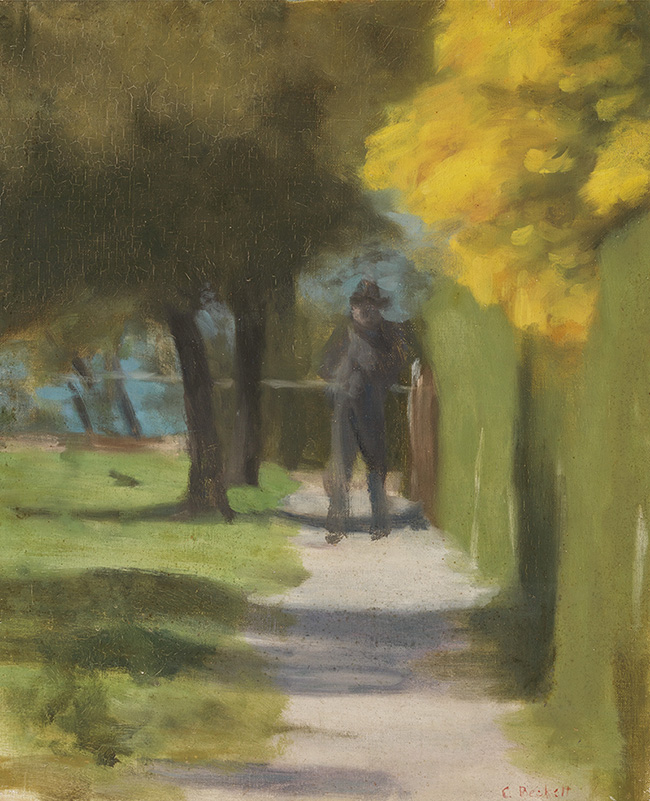
October Morning, painted in Melbourne circa 1927. Gift of Alastair Hunter OAM and the late Tom Hunter/Art Gallery of South Australia
Some go further. John McDonald of the Sydney Morning Herald says that he was so overwhelmed by the scale and diversity of the exhibition that he returned to see it three days in a row. “I’m wary of hyperbole and reluctant to play the game of declaring any artist to be ‘the best,’” he concludes, “but for me this retrospective of what remains of Clarice Beckett’s work has propelled her way ahead of more celebrated painters such as Margaret Preston and Grace Cossington Smith.” Beckett has been dismissed as another “Meldrumite,” he adds, “but neither Max Meldrum nor any of his tonalist disciples ever painted anything as poignant as the work in this exhibition… If this show were being staged at Tate Modern or the Museum of Modern Art, Beckett would be hailed as a figure of world renown.”
For what it’s worth — not much, since I’m no art critic — I had a similar experience. I’ve loved Beckett’s work for twenty years, but like McDonald I was inwardly fearful that seeing a lot of it together might lead to a disappointing sense of repetition. Far from it: each new viewing led to new discoveries, as works overlooked the previous day turned on their own magnetism.
Yet the paintings haven’t changed since they were excoriated almost a century ago by the ageing Arthur Streeton and other critics. They remain the same misty, often melancholy mix of colours, fuzzy outlines of people, trees and buildings, usually painted lightly, seemingly in great haste, and rarely reworked. Trundling her painting trolley around Beaumaris and up the coast of Port Phillip Bay, Beckett produced thousands of them: according to her sister Hilda, as many as five in a morning’s work. All of them different.
How did one young gallery owner rescue her from the oblivion to which she had been consigned? And what did Streeton and the art world of her time miss that today’s art world acclaims?
Rosalind Hollinrake was in her late twenties, and married to Barry Humphries, when she was startled by one moody, haunting painting, and then another, signed only “C. Beckett.” She asked around, but no one in Melbourne in the late 1960s knew of any artist of that name. She thought Beckett might be an American.
She called the journalist Keith Dunstan, whose daily “A Place in the Sun” was Melbourne’s most widely read newspaper column, and he asked his readers if they could shed light on this mystery. Two days later, a well-dressed older woman walked into Hollinrake’s gallery and unwrapped some small paintings, clearly by the same artist. The visitor was Hilda Beckett Mangan: the painter, she said, was her late sister, Clarice. And there were thousands more of her works stored in a farm shed near Benalla.
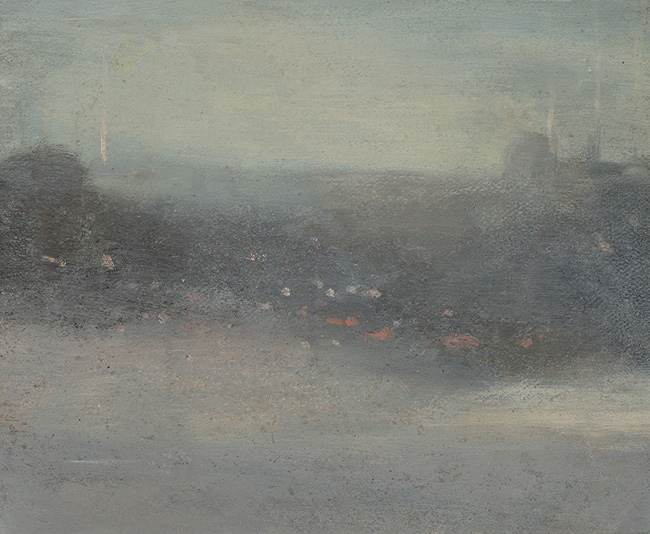
Evening, After Whistler, painted in Melbourne circa 1931. Gift of Alastair Hunter OAM and the late Tom Hunter in memory of Elizabeth through the Art Gallery of South Australia Foundation 2019, Art Gallery of South Australia, Adelaide.
When Rosalind and Hilda went to the farm, though, they were almost too late. The paintings had been stashed there for decades, and the shed was open to the weather on three sides: in that time, rain and possums had destroyed most of them. Only 369 works could be salvaged from the more than 2000 stored there. McDonald calls the loss “one of the great disasters of Australian art history.”
Hollinrake picked out a few dozen works and put them on exhibition at her Melbourne gallery. It was a success: the young Patrick McCaughey, as art critic of the Age, hailed Beckett as a “remarkable modernist… The advanced is never the prerogative of the announced candidates. It sneaks up behind you and raps the knuckles of your taste.” James Mollison, director of the new National Gallery of Australia, bought eight of the paintings on the recommendation of Fred Williams.
Eight Beckett exhibitions followed in a decade, spreading to Adelaide, Sydney and Canberra. Hollinrake published a biography, which soon sold out. Eventually the National Gallery of Victoria bought its first Beckett — although in recent years, in my experience, it is rare to find any of her works on its walls. The main galleries interstate, as well as in Ballarat, Bendigo, Castlemaine and Benalla, all had classics of her oeuvre. Group exhibitions — notably the nationally touring exhibition Clarice Beckett: Politically Incorrect (1999) and the South Australian gallery’s Modern Australian Women (2001) and Misty Moderns (2008) — widened and deepened her following.
Australia owes a great debt to Rosalind Hollinrake. It is largely thanks to her that, in all, about 600 paintings have been preserved. As McCaughey wrote in 2014 in his book Strange Country: Why Australian Painting Matters, “Without the exhibitions that Hollinrake mounted in her gallery and later curated for tour in public galleries, Beckett would have perished as an artist and the loss to Australian culture would have been immense.”
Clarice Beckett was born in 1887 into a relatively well-off family in western Victoria. Her father was a bank manager with the Colonial Bank of Australasia, which later merged into what is now NAB. He was later promoted to run the Bendigo branch, and then to head office in Melbourne. Clarice spent her childhood mostly in country towns: Casterton, Bendigo, at boarding school at Queen’s College, Ballarat (now merged into Ballarat Grammar), and finally a year at Melbourne Girls’ Grammar. In 1905, the Argus reported that the eighteen-year-old had won a first prize of three guineas in a competition for the best essay on the moral lessons of A Girl’s Cross Roads, then playing at the Theatre Royal.
But where her own road took her next is not clear. As curator Tracey Lock laments, “We know little about her. There are few extant letters and no diaries or journals.” But she clearly decided to become an artist, despite parental misgivings and all the obstacles in the way of a woman taking that path. In 1914 she and Hilda moved to Melbourne to begin drawing classes under Frederick McCubbin at the National Gallery art school: in view of her later nonchalance in drawing the human body, it is interesting that Clarice was runner-up for the prize for best drawings of hands and feet.
A life-changing decision saw her move on in 1917 to study with Max Meldrum, the charismatic theorist of tonalism, whose break with the traditionalists was to divide Melbourne’s art world in two. Meldrum disdained literal painting of human and natural forms and sought to capture instead “the great story of Nature’s colour, tone, proportion, sound and rhythm.” A “Meldrum group” formed around him, with Clarice Beckett as one of its leading members. Their works, overwhelmingly landscapes, rejected sharp lines for fuzzy edges, their blurred images reminding more literal minds of photos out of focus. Many in the art world just didn’t get it.
Beckett pushed the boundaries furthest of all. In her seascapes and suburban street scenes, forms became indistinct, humans became blobs on the beach or footpath, headlights became splotches in the fog or rain, poles were only roughly straight, and one colour merged into the next. She was indomit-able: the more the critics attacked her lack of “form,” the further she moved from what they wanted her to do.
One of the finest works of this exhibition, Tranquility (1933), shows that capturing the mood of nature, not its literal detail, was what mattered to her. Birds are rarely seen in her seascapes. Trees are suggested rather than precisely rendered. In the catalogue of a 1924 exhibition, she wrote that she sought “to give a sincere and truthful representation of a portion of the beauty of Nature, and to show the charm of light and shade, which I try to give forth in correct tones so as to give as nearly as possible an exact illusion of reality.”

Tranquility, painted in Melbourne circa 1933. Gift of Alastair Hunter OAM and the late Tom Hunter/Art Gallery of South Australia
The test is whether the viewer of the work senses it to be “an exact illusion of reality.” In her own generation, many did not. While her paintings of cut flowers in vases were universally popular, some critics, all of them painters themselves, disparaged her landscapes, either by ignoring them or by merciless criticism — often for choosing humdrum subjects such as street scenes and cars driving in fog and rain.
“This artist,” Streeton wrote sarcastically in the Argus, “appears to limit her vision to one particular expression of Nature — the misty lightness one sometimes encounters before the sun has risen high enough for its light to separate one object firmly from another. This may be an experimental stage in the study of this artist and when she chooses for a change a subject with hard edges, such as crockery, cutlery or cut glass, she should lend a welcome variety to her exhibitions.”
Yet Beckett was pushing the boundaries — just as Streeton himself had done almost half a century earlier — to create a new genre that would express different emotions. Did the old man remember how his 9 by 5 exhibition with Tom Roberts and Charles Conder in 1889 was savaged by the Argus critic of that time? “The modern impressionist asks you to see pictures in splashes of colour, in slap-dash brushwork, and in sleight-of-hand methods of execution leading to the proposition of pictorial conundrums, which would baffle solution if there were no label or catalogue,” wrote James Smith. “In an exhibition of paintings you naturally look for pictures, instead of which the impressionist presents you with a varied assortment of palettes.”
What distinguishes Beckett’s work so strongly from that of the other members of the Meldrum group, or of her contemporaries Margaret Preston and Grace Cossington Smith, is its appeal to the emotions. As one viewer aptly put it, “her works ache with feeling.” This is as true of her sunlit paintings — the Castlemaine gallery’s Boatshed, Beaumaris (1928), for example, or the privately owned Sunny Morning (1933) — as of those grey melancholy skies and mists she is best known for.
In short, Clarice Beckett was ahead of her time; decades later, the rest of us have gradually caught up. And not only about painting: these days there is nothing unusual about a concerned woman writing to her newspaper about an act of environmental desecration by officialdom. But I suspect that Beckett’s letter to the Argus, published on 7 June 1934, a rare glimpse into her thinking, was likewise ahead of its time:
“Allow me to plead for the protection of the foreshore. The beautiful cliffs of Beaumaris are undergoing what I believe the Sandringham council would call a ‘tidying-up’ process. This process consists of tearing up every native plant and creeper and leaving a trail of turned-over sods and black smouldering ashes where the plants and creepers have been cremated. In the summer we are certain of a plentiful crop of weeds, thistles and Cape weed to replace the native growths. The shallow roots of the tea-tree are left unprotected, and at the first gale of wind are uprooted and blown over. Why cannot the council realise that the chief charm of Beaumaris to residents and visitors lies in the native untouched beauty of the foreshore? Surely the council can find more useful work for the unemployed than in perpetrating such an act of vandalism.”
Fortunately, Beckett has had not just her critics but also her champions. After Rosalind Hollinrake, the Art Gallery of South Australia has been the most active in recent decades. In 2019 it negotiated to buy twenty-one of Beckett’s paintings from Hollinrake using a generous donation from businessman Alastair Hunter. This exhibition is their public debut; some, such as The Red Sunshade, are among Beckett’s finest.
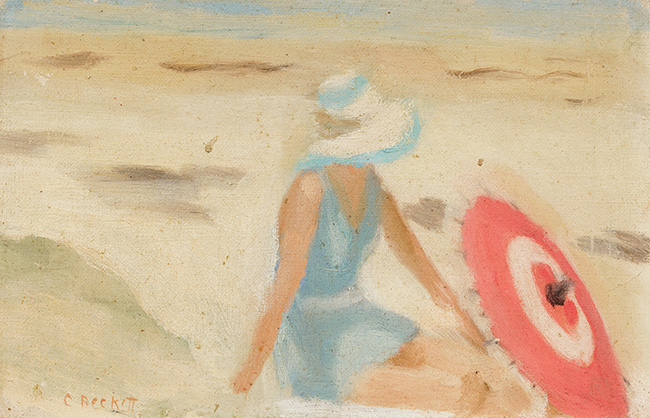
The Red Sunshade, painted in Melbourne in 1932. Gift of Alastair Hunter OAM and the late Tom Hunter/Art Gallery of South Australia
Even in her own time, Beckett had supporters. The Age’s Alexander Colquhoun understood her work well, and explained it to readers repeatedly in his columns. Percy Leason, a close friend and colleague in the Meldrum group, was unstinting in his praise as art critic of the Herald’s upmarket weekly, Table Talk. In 1933, a letter to the Age berated the National Gallery of Victoria for refusing to buy any work by this Victorian artist “whose work, as a woman painter, is not surpassed, and possibly not even equalled, by any other woman living in this world.”
And in October 1932, two days after Herald art critic Blamire Young had disparaged her new exhibition — if not as rudely as in his previous review, where he described her paintings as “mist, telegraph poles and service coaches… served up in the Meldrum manner remorselessly to our continued grief” — the paper published a contrary view from its folksy columnist, “The Rouseabout.”
“Though I had biked, hiked and motored along Beach Road around Beaumaris Bay a hundred or more times,” he wrote, “I did not fully recognise the beauty of the place till I looked in at Miss Clarice Beckett’s exhibition of oil paintings at the Athenaeum today. This Bendigo girl, pupil of Max Meldrum, has caught cliff and water in all moods of light and weather and season, revealing that there is not one Beaumaris Bay, but a score.
“I am indebted to Miss Beckett for a sharp lesson. There are bathing boxes in Beaumaris beach the sight of which I shunned unless nymphs happened to be guarding the doorways; petrol pumps on the road which inspired only a thought of the price of the juice they contained; telegraph poles put there, apparently, just to annoy artists.
“But she has courageously brought the boxes, pumps, and poles, as well as motor cars into the picture, and lo! we see that the sun loves to play about them. So I really saw Beaumaris for the first time.”
No name was attached, but around that time the Rouseabout was C.J. Dennis, beloved author of The Songs of a Sentimental Bloke. He understood what his fellow artist was showing him. This woman doing her own thing — this painter of moody, misty landscapes — produced paintings that delight, resonate and, in their silence, speak to our emotions in a way few other Australian artworks have done. •
